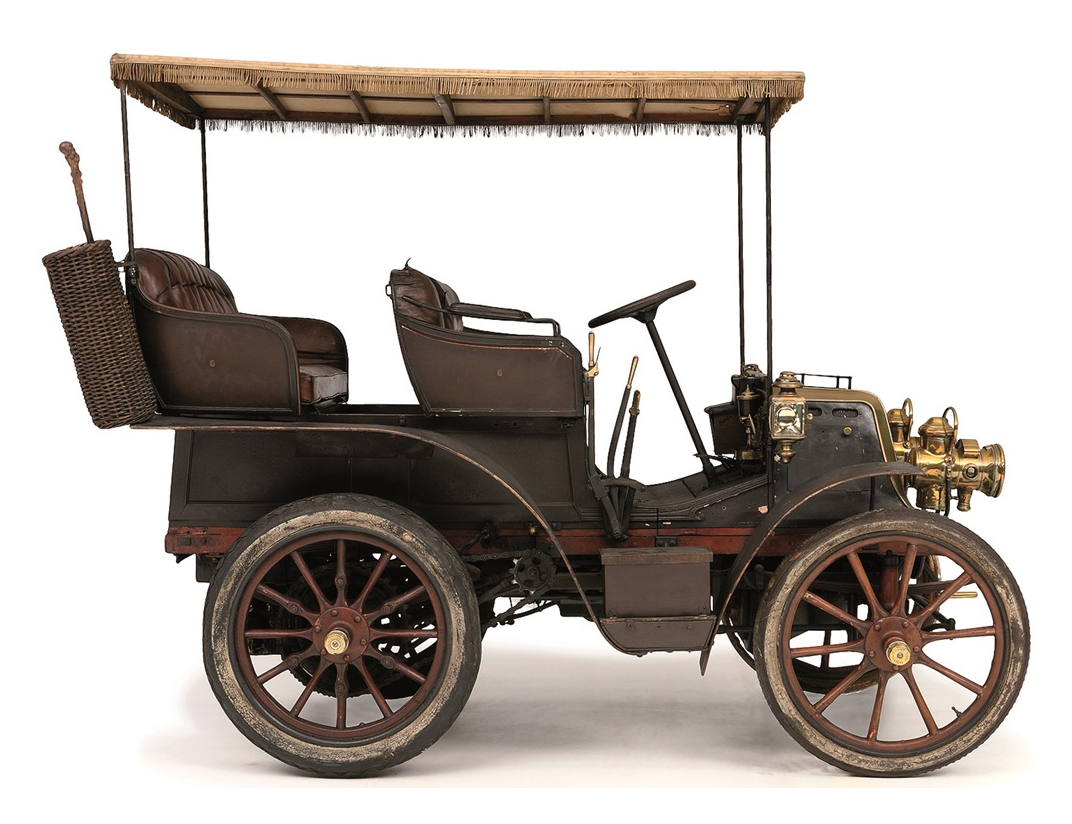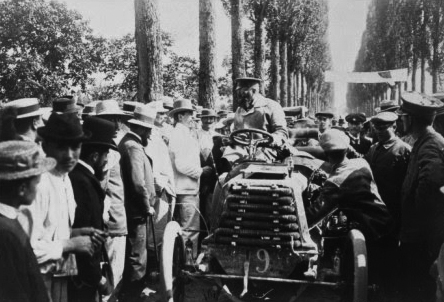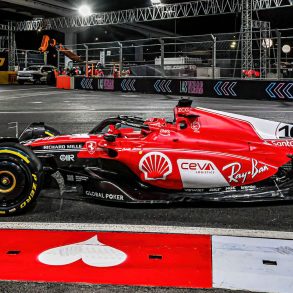Panhard et Levassor
Rene Panhard was an engineer whose business, based in Paris, made woodworking tools. In 1887 he, along with Emile Levassor and Belgian lawyer Edouard Sarazin established Panhard et Levassor for the manufacture of motor cars.
The lawyer Edouard Sarazin, was Gottlieb Daimler’s “distribution partner” and his job was to protect Daimler patents abroad, above all in France which was a leader in early motoring..
In 1887 Edouard Sarazin took an interest in the company Panhard et Levassor and was negotiating an aggreement over the manufacture of Daimler engines in France. Edouard Sarazin fell gravely ill and died that same year, at the age of 47, before the negotiations could be concluded.


In the early 1890s, most motorized vehicles had the engine in the center, under the floor. Panhard and Levassor tried their engine in that location, then at the back, and finally moved it to the front in a vertical position. In 1892 the firm built a car a clutch pedal to operate a chain-driven to the rear wheels. The vehicle also featured a front-mounted radiator. The Panhard et Levassor firm brought out their first sales catalog in 1892. The vehicles offered had tiller steering and the carriage-type lights used candles. There was no electrical system for ignition, so the “hot tube” was used in place of spark plugs. The “hot tube” was operated by turning the fuel valve on, then lighting the burners (one for each cylinder). The cylinder probes above the flame heated up which, in turn, fired the fuel mixture in the cylinders. Top speed was advertised as 12 mph. Fifteen of these vehicles were produced in 1892.
Panhard et Levassor cars soon gained a reputation for reliable and technically advanced cars. René Panhard personally undertook a journey from Paris to Versailles and then on to the cliffs of Etretat in Normandy completing the journey without any mechanical issues and at a sprightly speed of 6 mph. For the 1894 Paris–Rouen Rally, Alfred Vacheron equipped his 4 horsepower car with a steering wheel, believed to be one of the earliest employments of the principle. After winning a number of important road races with the new engine location, the partners were confident that the design change was a good one. Eventually, most other manufacturers adopted this idea. A pattern that is still the primary layout for cars of today. In fact the original concept was called the Panhard system. In 1895 cars raced Paris-Bordeaux-Paris with one of them, driven by Levassor who completed the race in 48 hours and 48 minutes for and average speed of 24.54 kph only to lose out to a Peugeot because the race has been classified only for vehicles with more than two seats. The car was powered by vertical twin cylinder that Levassor modified from an original V-twin Daimler. The freestanding twin later became the basis for the construction multi-cylinder engines at Panhard et Levassor.
In 1897 Panhard et Levassor were producing automobiles with steel tires although they recommended the use of solid rubber tires which were supplied at an extra cost. Pneumatics were not then a part of the regular equipment and did not appear on the firm’s catalogs until 1899 when they were used on the 5 and 7 hp light cars. Levassor would never see that day. In 1896, while taking part in the 1896 Paris–Marseille–Paris, Levassor was injured in a crash while leading. Refusing to quit the race he handed over his driving duties to his mechanic. Tragically he never recovered from the injury, and died in Paris the following year. Major Arthur Krebs succeeded Levassor as General Manager in 1897, and held the job until 1916. He was not a major supported of motor racing but he did turn the Panhard et Levassor company into one of the largest and most profitable manufacturer of automobiles before World War I.
In 1898 at the Marseille-Nice Trial the Panhards of Fernand Charron, Gilles Hourgiere and Rene De Knyff took all three steps of the podium. May of the following year at the Paris-Bordeaux Trial, Panhards swept the first five places and eight of the top ten with Fernand Charron again winning. The Chevalier René de Knyff between 1897 and 1903 took part in 18 car races all in a Panhard et Levassor. Vanderbilt Cup Race on the 8th of October 1904 at Long Island would prove to be Panhard’s last major victory at the hands of American George Heath.
The company would continue to compete in motorsports and in February 1934, George Eyson set a new world speed record of 214 kph (133.75 mph) in in this 290 bhp 35 CV special but the bar had been set very high and they would never achieve the same level of success they had at the dawn of motoring. The firm’s name was shortened to Panhard after the Second World War. 1965 was the last year of production for the Panhard et Levassor name when the company merged with Citroën.















